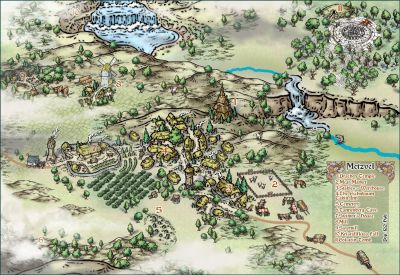
Monsen
Monsen
About
- Username
- Monsen
- Joined
- Visits
- 693
- Last Active
- Roles
- Administrator
- Points
- 8,940
- Birthday
- May 14, 1976
- Location
- Bergen, Norway
- Website
- https://atlas.monsen.cc
- Real Name
- Remy Monsen
- Rank
- Cartographer
- Badges
- 27
-
Scaling when Import new Bitmap
Notice that if a fill is NOT scaled, your map is likely to not look as good when exporting to an image as it looks in CC3+, because the fills doesn't have a fixed scale, so they won't be the same size in the export as in the on-screen view (Typically, they will be smaller and thus tile more).
Also, if you don't set it as scaled, it won't stay the same size as you zoom in/out of the map while working either.
-
Trouble with installing Vyntiri, Boogie and Dunjinni
Are all the folders in the proper locations? Those blank entries in the latest screenshot of yours is typical indication of symbol catalogs not being where they are supposed to be. Basically, the config in CC3 says that a catalog should exist, but the actual catalog file is not found.
For example, that top catalog file in the screenshot is expected to be found at
@Symbols\Medieval Symbols\Artisan Buildings Wooden Shingle.FSC(Remember that @ represents the location of your CC3+ data directory, so with a default CC3+ install, this would be
c:\ProgramData\ProFantasy\CC3Plus\Symbols\Medieval Symbols\Artisan Buildings Wooden Shingle.FSC)If there are any differences at all here (such as an extra folder in the middle or that path, or a missing folder) it indicates that things are not where they are supposed to be, and something has gone wrong at some point.
-
Is there partial edge stripes?
-
Trouble with installing Vyntiri, Boogie and Dunjinni
The filters those buttons use are set up to be compatible with the standard CD3 style cities. When used with other styles, they simply doesn't find the correct master filter, and ends up displaying the default set of symbols from whatever style your map is in.
You can toggle the filters used by using the :CC2SYMPATH: button. Each click switches to the next style in the list, or you can right click the button, pick master filter settings, and pick the desired one (These buttons want the CD3 Bitmap A one). Some styles may not have the right option in the list however, so another way of doing it is to click the :CD2: button once.
Note that changing symbol style will affect all other symbol buttons too though. The easiest way to get back to where it should be for your maps if you can't seem to do so using :CC2SYMPATH: is to simply save your map, then go to the File menu, and pick your just saved map from the top of the recent file list. This reloads the map, including restoring the default settings for that map.
-
Create new Symbol Catalogue
It is a limitation of the Wizard. If you use the pre-defined template option instead of decide settings myself, you can just pick the symbol catalog template and it will use it without you requiring to save the file as a fcw first.
When you hit save from the first time then, you can pick the symbol catalog type directly.







